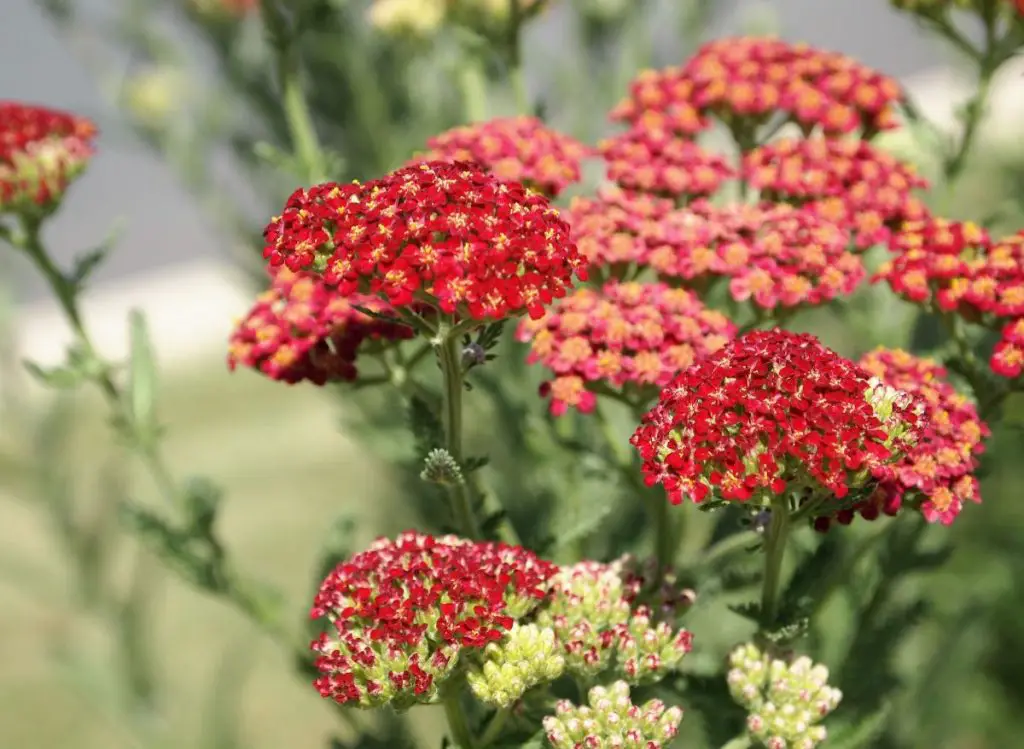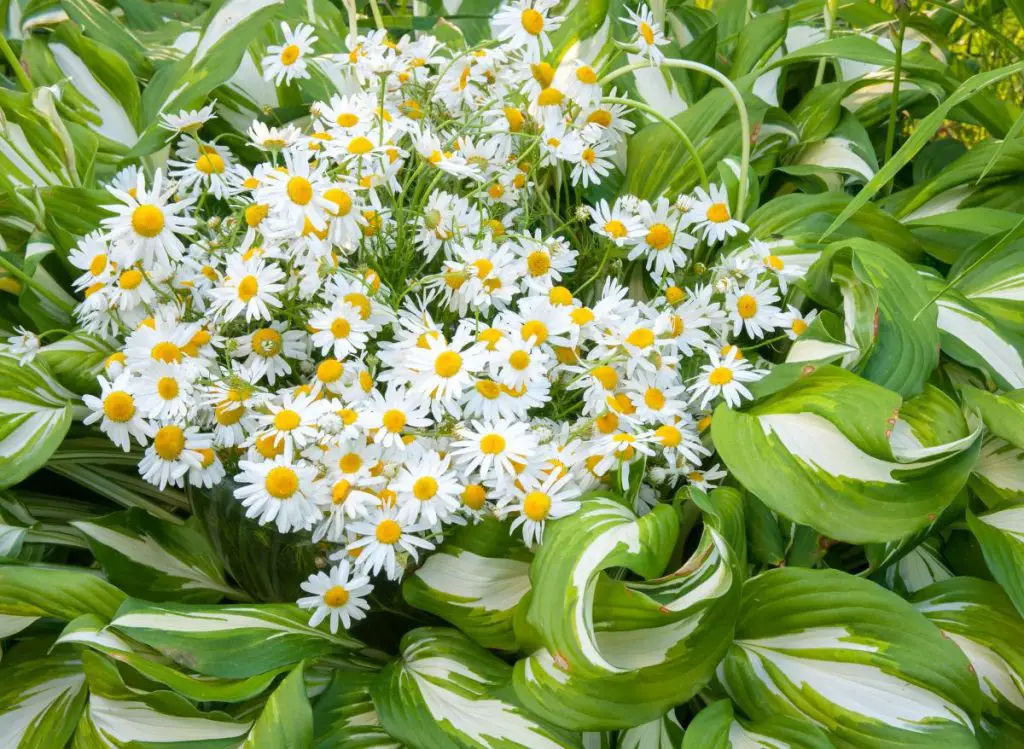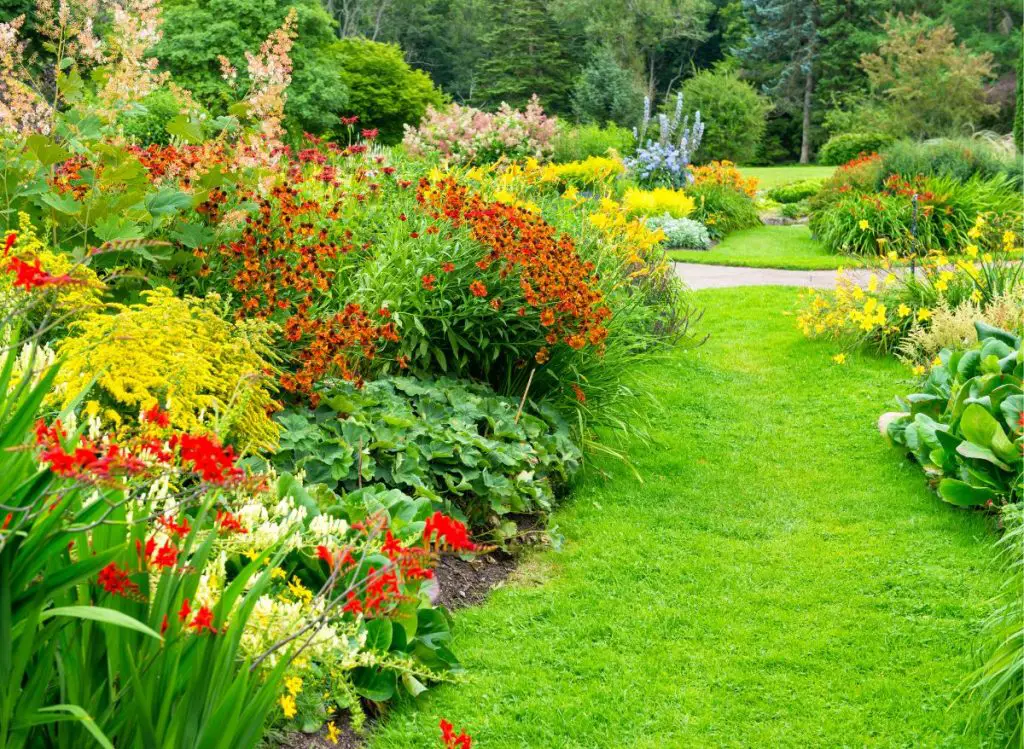
Yarrow (scientifically called Achillea millefolium) is a beautiful perennial plant commonly grown in gardens and landscapes across the world. Not only does a Yarrow plant add lovely color to any garden, but it also has several medicinal properties and is often used in herbal remedies (Source: North Carolina State University).
The beauty of yarrow is that it thrives in many growing conditions and requires minimal maintenance. Its tiny, colorful blooms come in shades of pink, red, white, and yellow and provide a stunning contrast in any garden.
However, not every plant is suitable for growing alongside yarrow. Read on to explore what not to plant with yarrow to ensure your garden remains lush, healthy, and thriving. If you also wonder how to use Yarrow as a companion plant for your garden, I wrote a step-by-step guide I encourage you to check out.
Things to Avoid Planting With Yarrow
Yarrow plants are an excellent addition to any garden and landscaping; however, they have special requirements that you need to be aware of.
Here are things to avoid planting with Yarrow:
1- Avoid Planting Yarrow With Crowded Plants
As a native of the dry, rocky soils of Europe and Asia, yarrow is hardy and can spread quickly. However, it does not do well with plants that grow densely and compete for space, sunlight, and nutrients.
I also suggest avoiding planting yarrow alongside plants that require regular pruning or regular fertilization as they will negatively affect their growth because they will become overcrowded, and their chances of getting pests and diseases will increase.
In addition, if you plant your yarrow plants too close to taller plants and shrubs, they might also have to compete for sunlight, which can impede the plant’s growth and reduce its productivity. Generally, yarrow plants thrive in full sun, about 6 or more hours of direct sunlight daily.
2- Don’t Plant Yarrow With Hosta or Other Shade-Loving Plants
Yarrow is a sun-loving plant. Sunlight is crucial for its growth, so planting it alongside plants that prefer shady spots, like hosta, may result in stunted growth, yellowing leaves, and reduced flower production.
Keep in mind that while some morning or late afternoon shade may be ok, you will need to make sure your yarrow plant gets at least 6 hours of direct sunlight each day.

3- Avoid Growing Other Weedy Plants With Yarrow.
Yarrow can compete well with many other plants, but some plants can quickly take over the garden and choke out other plants.
For example, it is recommended to avoid planting yarrow near weedy plants like creeping Charlie (Glechoma hederacea), thistle (Cirsium), quackgrass (Elymus repens), and bindweed (Convolvulus) because they can invade the space eventually and make yarrow plants struggle for sunlight and nutrients needed for growth.
4- Avoid Planting Yarrow With High-Nitrogen Plants
As a rule of thumb, plants that require high-nitrogen soil, like leafy vegetables and most annuals, are not suitable for planting alongside yarrow. They go through a similar growth stage, which means they will compete for nutrients, which reduces plant yield, and low-quality produce, in the long run.
Instead, I recommend you plant yarrow alongside low-nitrogen soil plants such as thyme and lavender, which are often used to make garden borders.
5- Don’t Plant Yarrow With Plants That Have Different Watering Requirements
Plants that have different water requirements can put yarrow’s health at risk because they won’t get enough water. Potted plants that have a higher water requirement than yarrow will cause yarrow to dry out, which will not allow yarrow to thrive.
In contrast, if you plant a yarrow with water-loving plants like bog rosemary or blue flag, the yarrow will struggle as the moist soil raises concerns of root rot disease.
6- Avoid Planting Yarrow With Moist Soil Plants
Yarrow prefers well-draining soils, and its foliage easily gets waterlogged if the soil is too wet that is why I recommend avoiding planting moisture-loving plants alongside yarrow.
Moist soil plants tend to thrive in soils that retain water, which is the opposite of what yarrow requires. Examples of moisture plants to avoid planting with yarrow include ferns, hostas, astilbes, and hydrangeas.
7- Avoid Planting Yarrow With Invasive Plants
Planting with invasive plants can affect the growth of yarrow and the well-being of other plants in the garden. In addition, invasive plants can quickly take over and compete for resources, and some can even suffocate yarrow and other plants.
Examples of invasive plants to avoid planting with yarrow include aggressive plants such as goldenrod (Solidago)

8- Don’t Plant Yarrow Near Shade-Tolerant Plants
Yarrow performs best in full sun, and planting it with shade-tolerant plants can cause it to struggle. If you plant your yarrow plant in part-shade conditions, it will grow leggier; therefore, the experts from Clemson University recommend planting yarrow in a full-sun location.
So, remember that shade-tolerant plants thrive in low light and can grow tall and bushy, which can create too much shade for yarrow to grow and thrive. Examples of shade-tolerant plants to avoid when planting with yarrow include ferns (polypodiophyta or polypodiopsida), ivies (Hedera helix), and bleeding hearts.
9- Avoid Planting Yarrow With Acid-loving Plants
Although yarrow is tolerant of a wide range of soil pH (the ideal pH for Yarrow is neutral (6.0-8.0), it does not prefer acidic soil, that’s why planting yarrow with acid-loving plants can affect its growth and cause it to struggle.
Plants that prefer acidic soils often require high levels of nutrients that may not be present in soils preferred by yarrow.
Examples of acid-loving plants to avoid planting with yarrow include blueberries (Vaccinium corymbosum), rhododendrons (Rhododendron), and azaleas (Rhododendron)
What to read next:
- Here’s How to Beautifully Underplant Olive Trees in Pots!
- Grow Your Garden on a Budget: Cheaper And Organic Alternatives to Miracle-Gro!
- How to Create a Beautiful Garden with Flowers that Complement Lantana.
Wrapping Up
I think we can all agree that adding yarrow plants to your garden can be quite rewarding; however, you need to pay attention to what plants you pair it with.
I suggest you avoid plants that grow aggressively and need a lot of sunlight, invasive and shade-loving plants, high-nitrogen plants, and plants that require different watering requirements.
Remember, yarrow is hardy and can thrive, but it does need adequate space, well-draining soil, and ample sunlight to provide you with its beautiful blooms year after year.

